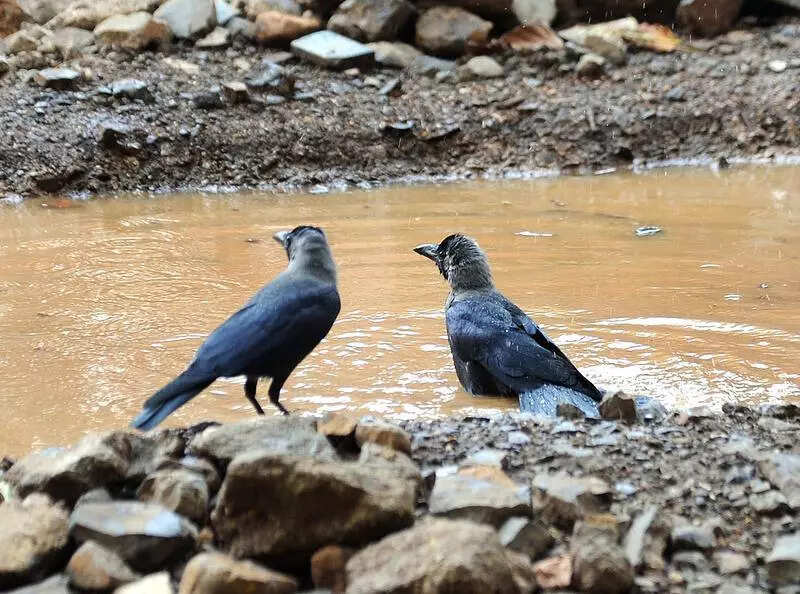Bengaluru asks: Where have all the crows gone? | Bengaluru News

Bengaluru: Not too long ago, the cawing of crows was an inescapable part of mornings in the city. You’d hear them from rooftops, wires, trees, and market corners. Today, silence has taken their place.The change hasn’t been sudden, but it has become impossible to ignore. Birdwatchers and experts have noted a steady decline in sightings of both the common house crow (Corvus splendens), a regular fixture in urban India, and the jungle crow (Corvus macrorhynchos), its larger and more robust cousin.Barring a few parks or near meat markets, crows have gone missing from residential neighbourhoods. People feel the absence when they wait for the birds to make an appearance during ‘pinda dana’, an offering to propitiate spirits of ancestors. Ulhas Anand, naturalist and vice-president at Tyfone told TOI, “This has been happening over the last decade. It really became noticeable after 2011. And it’s not just about the crows; this is a warning sign for our city’s entire ecological fabric.”So why is this happening? The answer, ironically, lies in what the city considers progress. As Bengaluru improved its waste management systems, streetside garbage, a primary food source for crows, began to disappear. Krishna MB, ecologist and ornithologist, explained, “The way we dispose of food has changed. BBMP has removed bins from street corners, and that has had a massive impact.”Its consequencesBut should we be worried? Crows feed on a wide range of leftovers: Rice, meat scraps, rats, carrion, and even small birds. In that sense, they have served as unofficial waste processors in the city. Their absence could lead to an increase in unmanaged waste and a rise in secondary pests. More importantly, their disappearance signals deeper ecological problems, loss of tree cover, collapse of food chains, and disruption of natural cycles, all of which affect not just birds, but the health and liveability of the city itself.Their absence has implications beyond a quiet skyline. Urbanisation has taken a toll on nesting habitats. Old trees that once provided space for crows and other hole-nesting birds such as barbets and parakeets are being cut down to make way for apartment blocks. In fact, every time it rains heavily in Bengaluru, 25-30 trees get uprooted. “Every tree lost is a pointer to numerous nests destroyed, badly affecting the crow population,” another bird enthusiast said. This apart, pesticides have wiped out insect populations. And constant city lights interfere with natural rhythms and disrupt photoperiodism (the phenomenon where organisms respond to the relative lengths of day and night) in birds, Krishna added. No one is countingNo formal data tracks the decline of these birds. On citizen-science platform eBird, data for May 2025 shows 91,520 jungle crows and 46,999 house crows in Bengaluru. But experts caution that these numbers can be misleading.“This doesn’t reflect the actual density or distribution,” said Krishna MB. “It tells us how many were recorded, not how many are left.”Without a city-wide or national census on common birds such as crows, it’s difficult to assess how deep the decline really is.Why koels are missing tooCrows aren’t disappearing in isolation. Other birds are vanishing with them, and some are vanishing because of them. Koels lay eggs in crow nests and rely on crow parents to raise their chicks. With fewer crows around and not many safe nesting trees, koels are laying fewer eggs. Rising construction noise and shrinking green spaces further prevent birds from breeding. This loss isn’t about one species, but an interconnected system beginning to break apart.K Sankara Rao, from the Centre for Ecological Sciences, said unless the environment supports safe nesting and mating, birds simply move away, or stop reproducing.CHAIN OF DISAPPEARANCESBirds that were commonly seen in the city, but are now rarely spotted:* House sparrow* Common myna* Dove* Red-vented bulbul— Madhuja Chakraborty
















